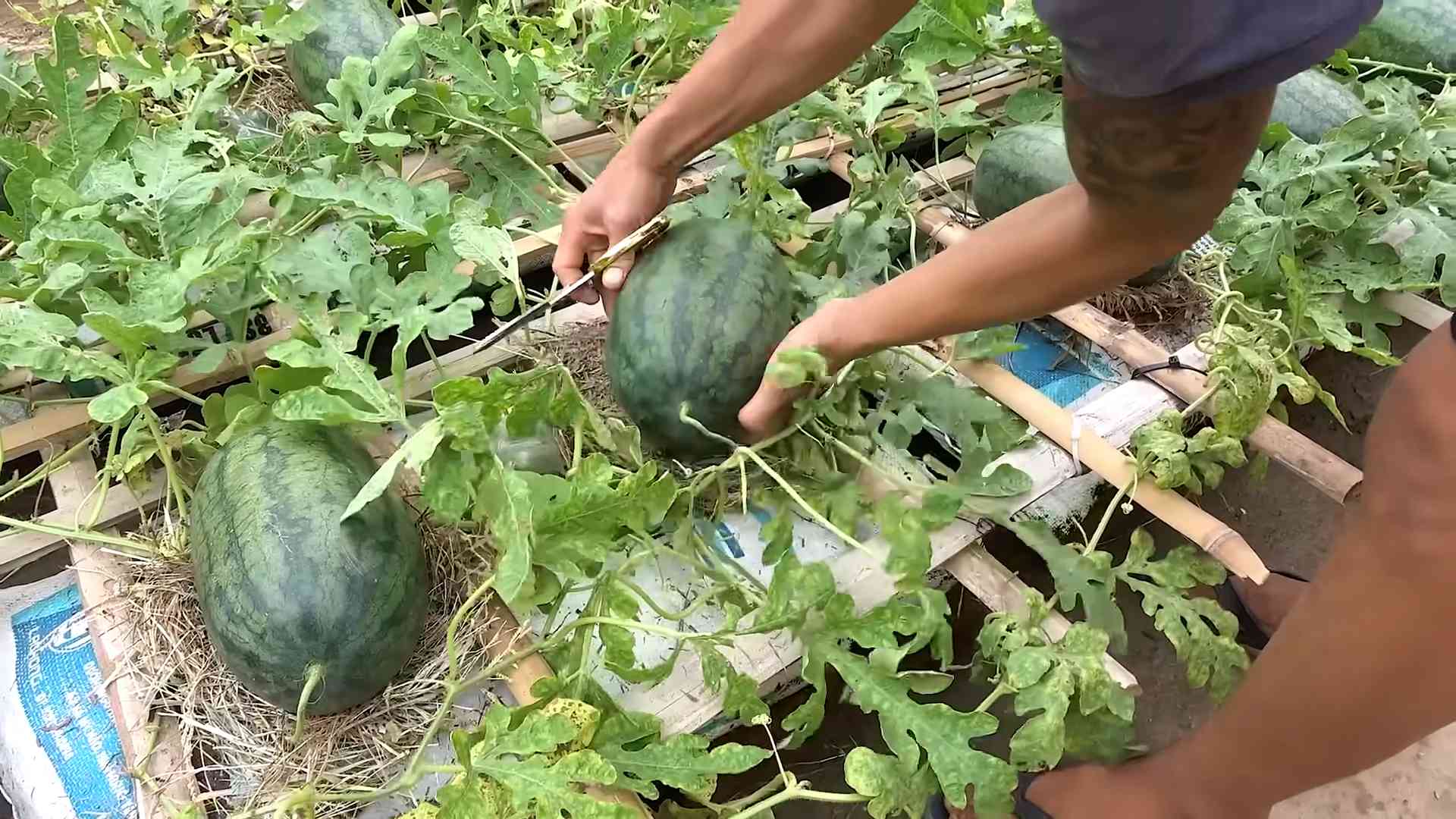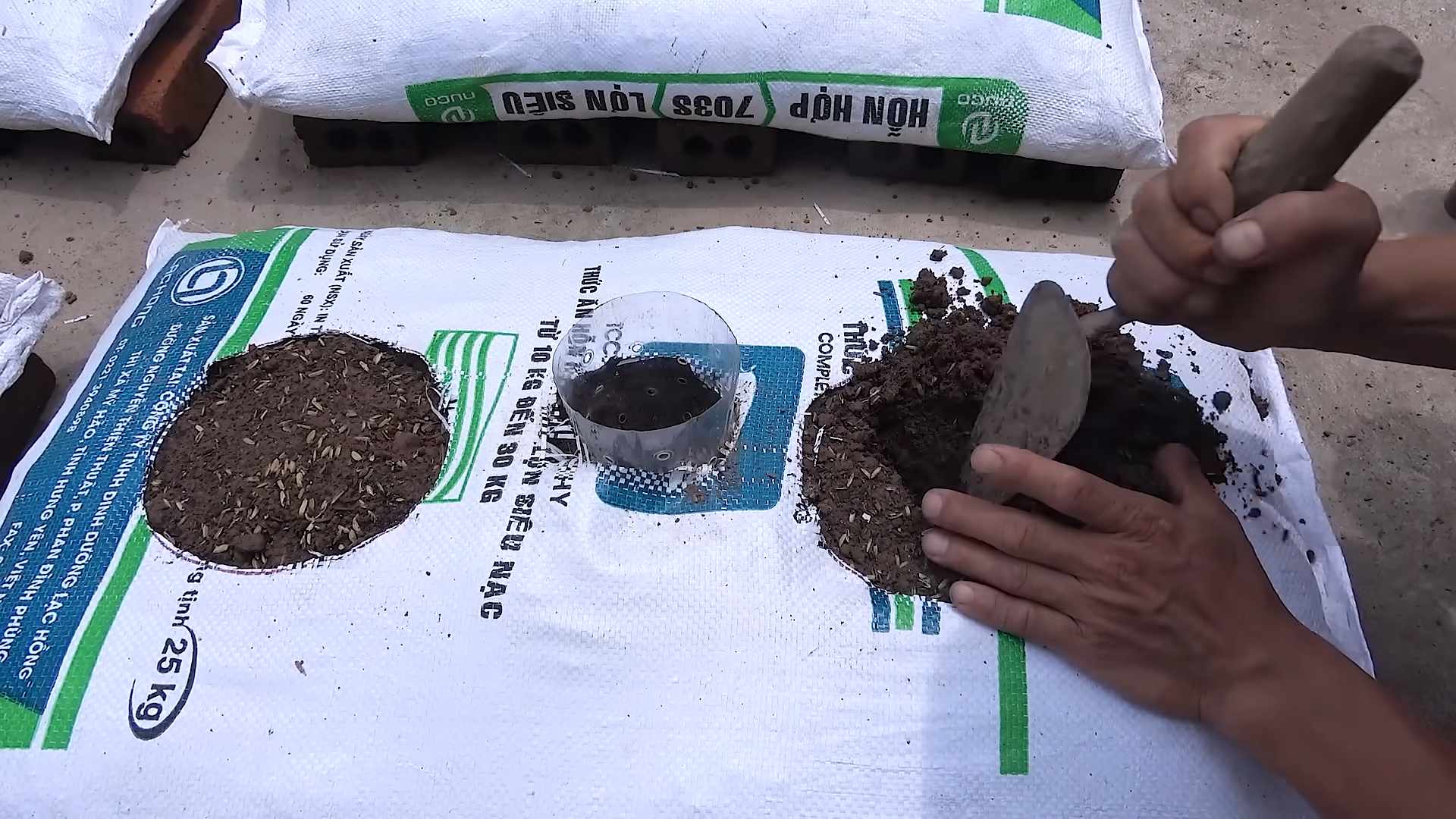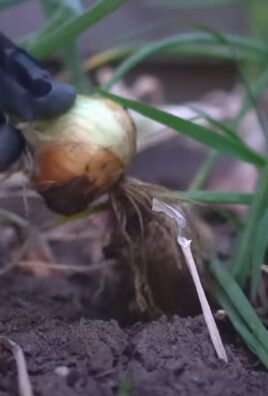Grow Strawberries at Home – imagine plucking juicy, sun-ripened strawberries straight from your own garden! It’s a dream many of us share, and thankfully, it’s a dream that’s easily within reach. For centuries, strawberries have been cherished for their sweet flavor and vibrant color. From ancient Roman gardens to medieval monastery plots, these little red gems have held a special place in our hearts (and stomachs!).
But let’s be honest, buying strawberries from the store can be a gamble. Sometimes they’re bland, sometimes they’re bruised, and sometimes they just don’t have that fresh-picked flavor we crave. That’s where the magic of DIY comes in! I’m going to show you some simple yet effective tricks and hacks to grow strawberries at home, even if you have limited space or a less-than-green thumb.
Why do you need these DIY tricks? Because growing your own strawberries is not only incredibly rewarding, but it also allows you to control exactly what goes into your food. No more worrying about pesticides or long transportation times. Plus, the taste of a homegrown strawberry is simply unparalleled. So, get ready to roll up your sleeves and discover the joy of harvesting your own delicious strawberries – it’s easier than you think!

Grow Your Own Delicious Strawberries: A Beginner’s Guide
Hey there, fellow gardening enthusiasts! I’m so excited to share my tried-and-true method for growing juicy, delicious strawberries right at home. Forget those bland, store-bought berries – nothing beats the taste of homegrown goodness! This guide is perfect for beginners, so don’t worry if you don’t have a green thumb yet. We’ll walk through everything step-by-step.
Choosing Your Strawberry Variety
Before we get our hands dirty, let’s talk about strawberry varieties. There are three main types, and each has its own unique characteristics:
* **June-Bearing:** These strawberries produce one large crop of berries, usually in late spring or early summer (hence the name!). They’re great if you want a big harvest all at once for making jam or freezing. Popular varieties include ‘Chandler’, ‘Earliglow’, and ‘Honeoye’.
* **Everbearing:** Don’t let the name fool you – everbearing strawberries don’t produce fruit continuously. Instead, they have two or three harvests throughout the growing season: one in spring, one in late summer, and sometimes a smaller one in fall. ‘Ozark Beauty’ and ‘Seascape’ are popular everbearing choices.
* **Day-Neutral:** These are the most consistent producers, yielding berries throughout the growing season as long as the temperature is between 35°F and 85°F. They’re a great option if you want a steady supply of strawberries all summer long. ‘Albion’ and ‘Sequoia’ are good day-neutral varieties.
I personally prefer day-neutral varieties because I love having fresh strawberries available for a longer period. Think about what you want from your strawberry plants and choose accordingly!
Preparing Your Strawberry Patch
Strawberries need a sunny spot and well-drained soil to thrive. Here’s how to get your garden ready:
* **Sunlight:** Strawberries need at least 6-8 hours of direct sunlight per day. Choose a location that gets plenty of sunshine.
* **Soil:** Strawberries prefer slightly acidic soil with a pH between 5.5 and 6.8. If your soil is heavy clay or sandy, amend it with compost or other organic matter to improve drainage and fertility.
* **Weed Control:** Clear the area of all weeds and grass. Strawberries don’t compete well with weeds, so it’s important to start with a clean slate.
* **Soil Testing:** I highly recommend testing your soil before planting. You can purchase a soil testing kit at your local garden center or send a sample to your local agricultural extension office. This will tell you the pH of your soil and whether it’s lacking any essential nutrients.
Planting Your Strawberry Plants
Now for the fun part – planting! You can purchase strawberry plants as bare-root plants or as potted plants. Bare-root plants are typically cheaper, but potted plants are easier to establish.
* **Timing:** The best time to plant strawberries is in early spring or late fall. This gives the plants time to establish their roots before the hot summer months or the cold winter months.
* **Spacing:** Space strawberry plants about 12-18 inches apart in rows that are 3-4 feet apart. This will give them plenty of room to grow and spread.
* **Planting Depth:** When planting bare-root strawberries, make sure the crown of the plant (where the roots meet the stem) is level with the soil surface. Don’t bury the crown, as this can cause the plant to rot. For potted plants, plant them at the same depth they were growing in the pot.
Here’s a step-by-step guide to planting:
1. **Dig a hole:** Dig a hole that is large enough to accommodate the roots of the plant.
2. **Amend the soil:** If your soil is poor, amend it with compost or other organic matter.
3. **Place the plant in the hole:** Gently place the plant in the hole, making sure the crown is level with the soil surface.
4. **Backfill with soil:** Backfill the hole with soil, gently firming it around the plant.
5. **Water thoroughly:** Water the plant thoroughly after planting.
Caring for Your Strawberry Plants
Once your strawberry plants are in the ground, it’s important to provide them with the care they need to thrive.
* **Watering:** Strawberries need consistent moisture, especially during fruit production. Water deeply and regularly, especially during dry spells. Avoid overhead watering, as this can promote fungal diseases. Drip irrigation is a great option for strawberries.
* **Fertilizing:** Fertilize your strawberry plants in early spring with a balanced fertilizer. Avoid over-fertilizing, as this can lead to excessive foliage growth and reduced fruit production. I like to use a fertilizer specifically formulated for berries.
* **Weed Control:** Keep your strawberry patch free of weeds. Weeds compete with strawberries for water and nutrients, and they can also harbor pests and diseases. Mulching around your plants with straw or wood chips can help suppress weeds.
* **Pest and Disease Control:** Strawberries are susceptible to a variety of pests and diseases. Monitor your plants regularly for signs of problems. Common pests include aphids, spider mites, and slugs. Common diseases include gray mold, leaf spot, and powdery mildew. Treat any problems promptly with appropriate insecticides or fungicides. I prefer to use organic pest control methods whenever possible.
* **Renovating June-Bearing Plants:** After your June-bearing strawberries have finished fruiting, it’s important to renovate them. This involves mowing the plants down to about 1 inch above the ground and thinning out the runners. This will help to promote new growth and increase fruit production the following year.
* **Removing Runners:** For everbearing and day-neutral varieties, remove the runners that develop during the first year. This will encourage the plants to focus their energy on producing fruit. After the first year, you can allow some runners to develop to propagate new plants.
Harvesting Your Strawberries
The moment we’ve all been waiting for – harvesting! Strawberries are typically ready to harvest about 30 days after they bloom.
* **Ripeness:** Strawberries should be fully red and slightly soft to the touch when they are ripe.
* **Harvesting Technique:** Gently twist or cut the stem of the strawberry just above the cap. Avoid pulling the berries, as this can damage the plant.
* **Timing:** Harvest strawberries in the morning, after the dew has dried. This will help to prevent them from bruising.
* **Storage:** Store freshly harvested strawberries in the refrigerator for up to a week.
Pro Tip: Don’t wash your strawberries until you’re ready to eat them, as this can cause them to spoil more quickly.
Growing Strawberries in Containers
If you don’t have a garden, you can still grow strawberries in containers! Here’s what you’ll need:
* **Containers:** Choose containers that are at least 12 inches in diameter and 8 inches deep. You can use plastic pots, terracotta pots, or even hanging baskets.
* **Potting Mix:** Use a high-quality potting mix that is well-draining. Avoid using garden soil, as it can become compacted in containers.
* **Sunlight:** Place your containers in a location that gets at least 6-8 hours of direct sunlight per day.
* **Watering:** Water your container strawberries regularly, especially during hot weather. The soil in containers tends to dry out more quickly than the soil in the ground.
* **Fertilizing:** Fertilize your container strawberries every two weeks with a balanced liquid fertilizer.
* **Overwintering:** In cold climates, you’ll need to protect your container strawberries from freezing temperatures. You can move them to a sheltered location, such as a garage or shed, or you can wrap the containers in burlap or bubble wrap.
Troubleshooting Common Strawberry Problems
Even with the best care, you may encounter some problems when growing strawberries. Here are some common issues and how to address them:
* **Lack of Fruit:** If your strawberry plants are not producing fruit, it could be due to a number of factors, including lack of sunlight, poor soil, or improper watering. Make sure your plants are getting enough sunlight, amend the soil with compost, and water them regularly.
* **Small Berries:** Small berries can be caused by overcrowding, lack of nutrients, or insufficient watering. Thin out the plants to provide more space, fertilize them with a balanced fertilizer, and water them deeply and regularly.
* **Rotting Berries:** Rotting berries are often caused by fungal diseases, such as gray mold. Improve air circulation around the plants by thinning them out and avoid overhead watering. You can also treat the plants with a fungicide.
* **Pest Infestations:** Monitor your plants regularly for signs of pests, such as aphids, spider mites, and slugs. Treat any infestations promptly with appropriate insecticides or organic pest control methods.
Enjoying Your Homegrown Strawberries
Congratulations! You’ve successfully grown your own delicious strawberries. Now it’s time to enjoy the fruits (literally!) of your labor.

Conclusion
So, there you have it! Growing your own strawberries at home is not only achievable, but it’s also incredibly rewarding. Forget those bland, store-bought berries that lack that intense, sun-ripened flavor. With a little effort and the right setup, you can enjoy a continuous supply of juicy, delicious strawberries right from your own backyard, balcony, or even windowsill.
This DIY approach to strawberry cultivation offers a multitude of benefits. You control the growing environment, ensuring your berries are free from harmful pesticides and chemicals. You also get to experience the satisfaction of nurturing a plant from seedling to harvest. And let’s not forget the cost savings! Over time, growing your own strawberries will undoubtedly save you money compared to constantly purchasing them from the grocery store.
But the real magic lies in the taste. Homegrown strawberries, picked at their peak ripeness, burst with a sweetness and aroma that you simply can’t find anywhere else. Imagine adding them to your morning yogurt, blending them into a refreshing smoothie, or using them to create a show-stopping dessert. The possibilities are endless!
Looking for variations? Consider experimenting with different strawberry varieties. Everbearing strawberries will provide you with multiple harvests throughout the growing season, while June-bearing strawberries offer a larger, more concentrated crop. You can also explore different growing methods, such as using hanging baskets, vertical planters, or even repurposed containers. Get creative and find what works best for your space and preferences.
Don’t be intimidated if you’re a beginner gardener. Growing strawberries at home is surprisingly easy, and the rewards are well worth the effort. Start small, be patient, and don’t be afraid to experiment. With a little practice, you’ll be harvesting your own delicious strawberries in no time.
We encourage you to give this DIY trick a try and experience the joy of growing your own strawberries. Share your experiences with us in the comments below! We’d love to hear about your successes, challenges, and any tips you’ve learned along the way. Let’s create a community of strawberry enthusiasts and inspire others to embrace the joys of homegrown goodness. Happy growing!
Frequently Asked Questions (FAQs)
What is the best time of year to plant strawberries?
The best time to plant strawberries depends on your climate and the type of strawberry you’re planting. Generally, early spring (after the last frost) or early fall are ideal. Planting in the spring allows the plants to establish themselves before the heat of summer, while fall planting gives them a head start for the following spring. For June-bearing varieties, fall planting is often preferred. For everbearing and day-neutral varieties, spring planting can be successful. Check your local climate and the specific recommendations for the strawberry variety you choose.
What kind of soil do strawberries need?
Strawberries thrive in well-drained, slightly acidic soil with a pH between 5.5 and 6.5. The soil should be rich in organic matter. Before planting, amend your soil with compost, well-rotted manure, or other organic amendments to improve drainage and fertility. Avoid heavy clay soils, as they can retain too much water and lead to root rot. If you have clay soil, consider growing your strawberries in raised beds or containers.
How much sunlight do strawberries need?
Strawberries need at least 6-8 hours of direct sunlight per day to produce a good crop of berries. Choose a planting location that receives plenty of sunlight throughout the day. If you’re growing strawberries in containers, you can move them around to ensure they get enough sun. Insufficient sunlight can result in smaller berries and reduced yields.
How often should I water my strawberry plants?
Water your strawberry plants regularly, especially during dry periods. The soil should be kept consistently moist, but not waterlogged. Water deeply and less frequently, rather than shallowly and more often. Avoid overhead watering, as this can promote fungal diseases. Drip irrigation or soaker hoses are ideal for watering strawberries, as they deliver water directly to the roots. Check the soil moisture regularly and adjust your watering schedule accordingly.
What are the most common pests and diseases that affect strawberries?
Strawberries can be susceptible to various pests and diseases, including slugs, snails, aphids, spider mites, gray mold (Botrytis), and leaf spot. Regularly inspect your plants for signs of pests or diseases. Remove any infected leaves or berries promptly. Use organic pest control methods, such as introducing beneficial insects or applying insecticidal soap. To prevent fungal diseases, ensure good air circulation around your plants and avoid overhead watering. Consider using a fungicide if necessary, but always follow the instructions carefully.
How do I fertilize my strawberry plants?
Fertilize your strawberry plants in the spring, after they have finished flowering. Use a balanced fertilizer that is specifically formulated for berries. Avoid over-fertilizing, as this can lead to excessive foliage growth and reduced fruit production. You can also amend the soil with compost or other organic matter to provide a slow-release source of nutrients. Consider using a foliar fertilizer to provide a quick boost of nutrients to the leaves.
How do I protect my strawberries from birds?
Birds love to eat strawberries, so it’s important to protect your plants from them. The most effective way to protect your strawberries is to cover them with netting. You can also use bird scare devices, such as reflective tape or plastic owls. Another option is to plant your strawberries near other plants that birds don’t like, such as onions or garlic.
How do I overwinter my strawberry plants?
In colder climates, it’s important to protect your strawberry plants from the winter cold. After the first frost, mulch your plants with straw or pine needles to insulate the roots. You can also cover them with a row cover or cold frame. In the spring, remove the mulch gradually as the weather warms up.
How long does it take for strawberry plants to produce fruit?
The time it takes for strawberry plants to produce fruit depends on the variety and the planting time. June-bearing strawberries typically produce fruit the following spring after planting. Everbearing and day-neutral strawberries may produce some fruit in the first year, but the main crop will be in the second year. Be patient and provide your plants with proper care, and you’ll be rewarded with a bountiful harvest of delicious strawberries.
Can I grow strawberries in containers?
Yes, strawberries grow very well in containers. Choose a container that is at least 12 inches deep and wide. Use a well-draining potting mix and provide your plants with plenty of sunlight and water. Container-grown strawberries may need to be fertilized more frequently than those grown in the ground. Consider using a self-watering container to make watering easier.





Leave a Comment